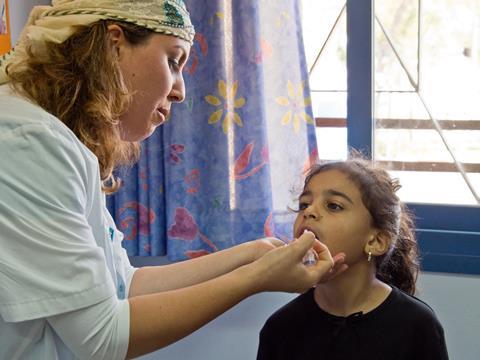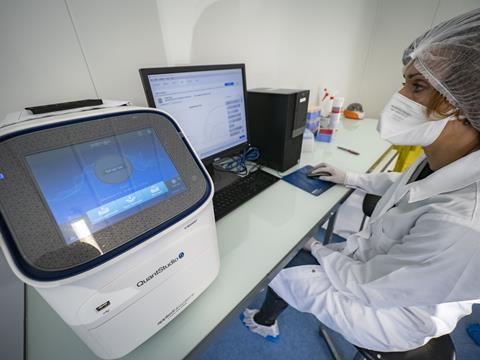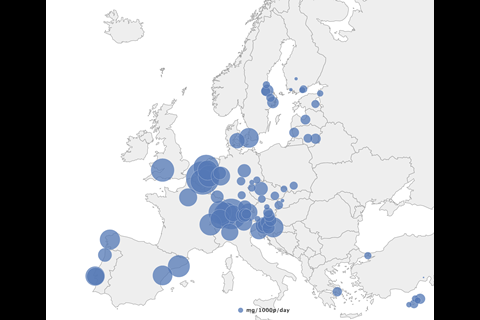From tracking disease outbreaks to monitoring drug use, there’s a lot to be learned from the things we flush down the toilet, Katrina Krämer finds
In February of 2020, Covid had arrived in Spain. A tourist on one of the Canary Islands fell ill, then a man near Valencia died. But these were isolated cases. Nothing suggested community transmission, so the government decided against introducing containment measures.
But there were some scientists who knew that the virus was already spreading rapidly – and undetected – across the country. Having collected and analysed sewage water in the Valencian region, the team found so much virus RNA in that it was unlikely to come only from a few scattered cases. ‘Our results show that the virus was probably undergoing local community transmission by the time the very first cases were declared in the region,’ they wrote.
A week later, it became clear that they had been right. The number of cases rocketed, and a month later the Spanish government put the country under a strict lockdown.
The idea that something as messy – and frankly gross – as sewage could provide such crucial information was once almost laughable. Yet the pandemic forced many to consider that the things we flush down the toilet are invaluable to understand the health of whole communities. Sewage treatment plants can serve as chemical observatories to zoom in on disease outbreaks, recreational drug use, people’s diet, exposure to persistent chemicals and even their genetics.
But the field also has to grapple with the ethical implications of surveying people in this way. At first glance, wastewater analysis seems anonymous. But if applied on a small enough scale, it can pick out a single person with an asymptomatic Covid infection. Since the detached chemical data offers no real insight into people’s habits and interactions, it has the potential to erase individual experiences and stigmatise entire communities.
Early warnings
Polio was one of the first things to be monitored through wastewater. In 1988, a worldwide effort to eradicate the disease began; a year later, Israel set up a national sewage surveillance system to track its own attempts to stamp out the virus through vaccinations. And it worked: worldwide, infections fell from 350,000 in 1988 to less than 200 in 2019.
Ever since, Israel kept its monitoring system running – lucky for them, as it alerted them to a silent polio epidemic in 2013. The results came as a shock in a country that had been declared polio-free by the World Health Organisation. An urgent vaccination campaign managed to get the outbreak under control in less than a year.

It wasn’t until the early 2000s that wastewater analysis really started to get traction. ‘There was a realisation that wastewater is a source of information that could relate quite a lot of aspects that otherwise might be hidden from society,’ says Rolf Halden, who studies sewage epidemiology at Arizona State University in the US. One of these hidden aspects is people’s use of recreational drugs.
The first proof of concept showing that wastewater can track drugs came from Italy. In 2005, researchers collected water samples from the Po, Italy’s longest river with five million people in its catchment area. It turned out to be carrying about 4kg of cocaine and its metabolite, benzoylecgonine, per day. This, the team estimated, implied an average daily use of at least 27 doses for every 1000 young adults – a figure greatly exceeding official national figures.
In some places, wastewater analysis was embraced enthusiastically. In 2010, the EU’s illicit drugs agency (EMCDDA) founded the Sewage Analysis Core Group Europe. Every year since, researchers have been volunteering to collect wastewater from 80 European cities and analyse it for cocaine, MDMA, amphetamine, methamphetamine and tetrahydrocannabinol.
‘[Wastewater analysis] brings something that the other methods do not have, like almost real-time data, temporal and geographical comparison,’ explains João Matias, an epidemiologist and scientific analyst at EMCDDA. The chemical analysis eliminates people’s subjectivity around amounts, frequency and type of substance they use.
‘Wastewater catches trends before the other tools,’ Matias says. It was the first indicator that, in 2014, there was a steep rise in ecstasy use across Europe. ‘Population surveys only showed that increasing trend two to three years afterwards.’ When the EMCDDA investigated, they found that producers had started to market the drug in new ways, for example creating customised pills bearing the logos of music festivals.
Public knowledge
When it comes to a fast-moving infectious disease, time is even more crucial. ‘On average, we see trends in wastewater four to six days before we see them in cases; it is a very consistent early warning system for changes and trends in the community,’ agrees Amy Kirby, who leads the US National Wastewater Surveillance System. The network was built from scratch in 2020 to track Covid cases. ‘We are seeing a lot of our state and local health departments using the data to make decisions, particularly about resource allocation,’ she says. This includes determining where to send mobile testing units and ensuring hospitals have enough supplies and staff to cope with an increasing number of patients.
Some places are also using the data for public health guidelines: to tell people to distance, wear a mask and get vaccinated, Kirby says. ‘What we hear from our health department partners is that those messages that explicitly include wastewater data are far more effective than the ones that just say: “Rates are going up”.’

Sewage data can even lead to wide-ranging policy changes. In 2002, Halden and his team discovered that US wastewaters contained large amounts of triclocarban, a common antibacterial for personal care products like soap. ‘We showed that triclocarban was breaking through [treatment] plants across the United States, contaminating surface waters and drinking water resources,’ he explains. In 2016, the US Food and Drug Administration banned triclocarban and 18 other antimicrobial compounds – in part because of Halden’s observations. This was, he says, ‘the first time researchers were able to identify a problem in wastewater and collect a body of data sufficient to motivate the federal government to make a move’.
In Europe, wastewater analysis has become one of the tools countries use to assess their national illicit drug strategies. Other regions have since followed suit, including Australia, which now has one of the most comprehensive wastewater surveillance networks for recreational drugs. It has become part of an early warning system, which allows wastewater epidemiologists to report spikes in drug use or new drugs. This alerts those who work with people who may be vulnerable to harm from these substances.
Just knowing how much of a drug there is doesn’t tell you where the problems are
But there was a lot of scepticism in the early years, recalls analytical chemist Cobus Gerber from the University of South Australia. ‘We couldn’t get funding because people said “These compounds are there in too small amounts, there’s so many industrial chemicals, you’re wasting your time”.’
José Quintana from the University of Santiago de Compostela, who leads Spain’s budding national wastewater analysis network, also recalls people’s initial hesitance. ‘You have to convince the local authorities that you want to take samples in the wastewater treatment plant to measure drugs, and they are always scared of any [negative press].’ Analysing sewage can, after all, reveal harsh truths. Quintana’s team found that amphetamine levels in the country’s north are 10 times higher than in the rest of Spain – not just twice as high as the survey results suggested.
Some of the criticism is legitimate, Gerber says. ‘Just knowing how much of a drug there is doesn’t tell you where the problems are, it doesn’t say whether the user is male or female, young or old.’ But at the same time, it allows researchers to determine a baseline level and the effect of any interventions, he adds.
For example, it showed the dramatic effect of Anom, a three-year sting operation during which law enforcement intercepted millions of messages sent through a supposedly secure messaging app. Over 800 people were arrested, including many suspected to be involved in drug syndicates. Drug levels in Australia’s wastewater almost halved. While Gerber notes that there might also have been other factors at play, the data suggested that the operation had done ‘serious damage to the local drug industry’.
A lot of people ‘have come to appreciate that wastewater monitoring actually has a contribution to make’, Gerber says. ‘Certainly the police agencies that we deal with, they all say to us that wastewater monitoring has transformed the industry.’
Needles in dirty haystacks
The purely technical side of wastewater analysis is almost mundane. Chemical compounds are analysed with liquid chromatography (rarely gas chromatography) followed by mass spectrometry or sometimes tandem mass spectrometry. When researchers are looking for biological agents like viruses, they use the polymerase chain reaction (PCR) to analyse genetic material. The real puzzle lies in disentangling useful information from the background noise of a mixture as complex as wastewater – and then understanding how the data relates to what scientists want to measure.
Drug concentrations only make sense if the compound’s exact pharmacokinetic profile is known. This is a particular problem for new psychoactive substances, where often little is known about how they are converted in the body. A compound that has no structural resemblance to anything else would be almost impossible to pick out, Gerber says. ‘However, the bulk of [new psychoactive substances] tend to be stereoisomers of each other.’ There are large compound databases that help chemists find molecules with similar mass and narrow down potential structures to a few that can be compared directly.
There’s lots of things that we do with wastewater that we don’t do with blood or urine, and that can really change the signal
For other compounds, it’s not the unknown that makes them problematic, but simply their molecular structure. There’s currently no way to measure γ-hydroxybutyric acid, GHB. ‘It’s a tiny molecule, and mass detectors don’t do very well with small molecules,’ explains Gerber. GHB also tends to be removed during the pre-analysis procedure intended to remove interferences.
Wastewater contains a lot of other stuff – microbes, odour-limiting substances, soaps, bleach – that can truly mess with results. How interactions between compounds impact concentrations ‘has been underappreciated by a lot of people who rushed to measure something in wastewater’, Halden says. ‘They essentially took the mindset of measuring urine or blood and translated it to wastewater. But there’s lots of things that we do with wastewater that we don’t do with blood or urine, and that can really change the signal. Things can be converted, things can be obscured, things can be destroyed.’
‘[What] we see most often in wastewater is humic acids, soils and things like that,’ Kirby says about the thousands of samples that researchers across the US have collected to track Covid cases. ‘Those really are difficult to get out of the sample with our typical RNA extraction procedures, and our PCR enzymes really don’t like them.’ To account these inhibitory substances, scientists spike samples with a known amount of another virus and then check how much is recovered.
There is a significant shift in dietary components from the end of a year to a new year
By the end of 2022, the US wastewater network will start going beyond Covid and track antibiotic resistance genes, foodborne infections, influenza and the extremely drug-resistant fungus Candida auris. ‘Our goal in the long run is to be able to use sequencing to look for, essentially, everything – sequence all of the DNA that’s in a sample, screen out the human DNA,’ says Kirby.
While virus and drug level analyses have become routine, scientists are starting to make more complex deductions from wastewater data. ‘I was involved in the study that showed the first application that looked at dietary trends in communities,’ says environmental chemist Arjun Venkatesan from Stony Brook University, US. Together with Halden, he identified phytoestrogens as diet biomarkers. The more of it there is, the more fruits, vegetables, grains and soy people eat. Halden says that over two years, his team even saw trends that correlate to new year’s resolutions: ‘There is a significant shift in these dietary components from the end of a calendar year to a new year.’
There are many other markers being monitored in attempts to use wastewater data: isoprostanes for estimating community-level anxiety, gut microbes for approximating obesity levels, human DNA for investigating shared genetic traits like ethnicity, and a whole range of diet and pharmaceuticals biomarkers that seem to correlate to socioeconomic status.
It’s not clear in every case what the data might be used for and whether it will be used conscientiously. Scientists have cautioned that using biomarkers to broadly characterise various community attributes might eliminate people as individuals. ‘As someone who is Latinx and has trouble being represented in official surveys, it is disheartening to have my identity further erased,’ a researcher wrote in an article that discusses how to prevent scientific and ethical misuse of wastewater data.
Intrusive and insensitive?
Wastewater’s legal status is fuzzy. While rubbish counts as abandoned property that can’t be stolen, it’s unclear whether the same is true for sewage. Yet in 2009, a US law graduate student noted that wastewater surveillance might be ‘flushing the Fourth Amendment down the toilet’.
The Fourth Amendment to the US constitution prohibits unreasonable searches and seizures. It could well be reasoned that sampling and testing an individual home’s sewage constitutes a search requiring a warrant. But wastewater researchers have argued that this ultra-granular analysis is unlikely to ever be realised. Not every residence has an easily accessible pipe and it would be far too expensive just to prove a minor offence like drug use.
We are in a position to give underserved communities the information they need
But monitoring larger individual buildings like schools, prisons or workplaces is entirely possible – and has been done. Wastewater data has helped police in China track down and arrest a drug manufacturer, and some US universities have monitored sewers on campus to detect Covid outbreaks in student dorms. But this runs the risk of identifying individuals, the exact thing wastewater analysis wants to avoid by aggregating data from thousands of people.
‘From an ethics perspective, you could say “Don’t go too small, because you might violate people’s privacy”,’ says Halden. ‘But we looked at it from the other side, as in what is it that we can do for the people that are right now disadvantaged? You might be able to show that in an impoverished community, where a chemical plant gets built because it’s easy, people get exposed to certain toxins disproportionately. We are in a position to give underserved communities the information they need to press forward their causes.’
‘The effects in terms of ethics and the legality is going to be differently distributed depending on the vulnerability of the population,’ says social scientist Kari Lancaster from the University of New South Wales in Australia, where she investigates evidence-making interventions in health. ‘In the case of incarcerated people, we’re talking about an incredibly marginalised population, so that really close monitoring has a very different effect on people’s lives compared to how wastewater might be monitored at a treatment plant level.’
Wastewater data can be very stigmatising, agrees Gerber. ‘If you’re saying there’s a drug problem in the site that you measure, people take their kids out of school and they put them in the other catchment area.’
Wastewater surveillance definitely does not replace traditional surveys
Only a few years ago, one of the arguably worst ways to use wastewater data emerged in Australia. The government decided to randomly drug test 5000 social welfare recipients as young as 15, based on wastewater evidence that indicated a higher rate of illicit drug use in that catchment area. The plan was heavily criticised including by the Royal Australasian College of Physicians and the Australian Human Rights Commission, who called it ineffective at best and harmful at worst. After the backlash, the government abandoned the idea.
‘[Sewage data] doesn’t actually tell you how to intervene if you’re interested in reducing the harms associated with drugs, as opposed to reducing drug use per se,’ Lancaster points out. ‘Globally, there’s much more of a push now towards policy that is focused on the former than the latter.’ ‘Wastewater surveillance definitely does not replace traditional surveys or border controls,’ Venkatesan adds.
If we only use wastewater, we will only know a part of the reality
Even when the goal of analysing wastewater is to prevent a public health emergency like Covid, care needs to be taken on how the data is used. Insensitive interventions can worsen outbreaks by increasing fear and stigmatisation, a study on the 2013–2016 Ebola epidemic concluded. Failure to address fear-related behaviours accelerated the disease’s spread and led to more deaths – both from Ebola and from other treatable conditions as people avoided hospitals or tried to hide their illnesses. Fear of the virus also increased discrimination toward peoples and products of highly affected nations, amplifying the cascade of social problems that came with the outbreak.
It is important to remember that sewage surveillance can only ever be one method in the toolbox, Matias says. ‘If we only use wastewater, we will only know a part of the reality. You need to have a helicopter view, putting all the data together to better understand what’s happening.’
Wastewater analysis is sometimes touted as more accurate and objective than people’s self-reported data, but this can erase the complex social dynamics behind viral transmission or drug use. ‘We know from social research that having really fine-grained local knowledge is incredibly important,’ Lancaster says. ‘What we need to get better at is that dialogue between chemists, epidemiologist, people doing public health policy work and policy makers.’
‘The important thing is not to assume that [wastewater analysis] is beyond ethical review because it seems removed from individuals and their bodies,’ she adds. Over the last few years, she has become more optimistic that sewage surveillance data can be used for good when it’s translated into policy. ‘The more I’ve seen how it is being used in the context of viral outbreaks, for example, and antimicrobial resistance, I think that it’s been a fantastic tool that does actually have a lot of promise.’ She sees particular potential for wastewater analysis in low- and middle-income settings where routine health data collection may be difficult or costly.
‘The big question is, are we going to put wastewater to good use to help and empower populations, or are we using it simply for surveillance purposes,’ asks Halden. ‘There’s so many things you can do with the information you collect. I think it’s really important that we create an ethical and moral and legal framework that allows us to use this technology responsibly.’
Katrina Krämer is a senior science correspondent for Chemistry World















No comments yet